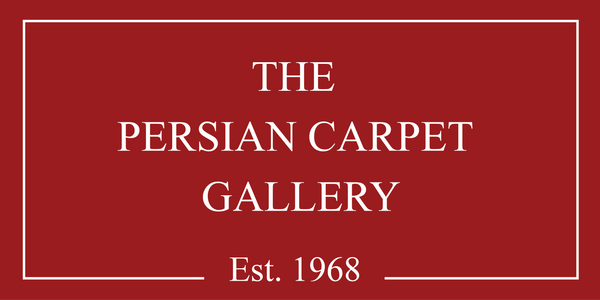Rug Making Regions Explained
Persia
Iran has a rich tradition of craftsmanship by tribes such as the Qashqai, the Lur and the Bakhtiari as well as from the magnificent Safavid period, when carpets were woven around hunting and garden themes.
Both Nomad and village dwellers created rich and varied weavings, featuring stylized shapes and geometric patterns. As well as weaving symbolic colours and patterns in to prayer rugs, their art also included realism, with many designs featuring people, animals and flowers.
Not only were these carpets used in the homes of the peoples that created them, they were also used to cover sacred parts of shrines and mosques, and as symbols of wealth by Royalty and merchants, who collected and displayed the best of them.
Their classic beauty quickly drew keen interest from Europe, and the rugs and carpets of Persia became a lucrative export
Afghanistan
Of all oriental rugs, Afghans are the most easily recognizable. They are made chiefly in Afghanistan, which lies south of Turkmenistan, and is inhabited largely by nomadic tribes.
In Afghan rugs, the base colour is almost always red. However, the red varies a great deal. The older Afghans are frequently copper-coloured, while the newer ones are a deep wine red. Their patterns are usually composed of large distinctive octagons, called Guls, which are treated very boldly. The general effect is very dark with the Gul divided into four blue and brown panels with the colour matching in opposite corners. Around the field are a number of borders which may sometimes be cream or white.
At first glance these rugs may resemble Turkoman rugs, but their weaving is usually much coarser, and the pile is not cut as close than the more expensive Turkomans.
Turkey
Turkish carpets are among the most sought after household items all over the world. Their colours tones and patterns, with traditional motifs, have contributed to the status that Turkish carpets have maintained since the 13th century.
In the traditional households, women and girls take up carpet and kilim weaving as a hobby and as a means to earn money. The carpets are used as floor coverings while the kilims can be utilized as blankets, curtains, sofa covers and cushion covers.
Turkish rugs are also used extensively in the mosques of the region. As there are no chairs or benches in mosques, it is not uncommon to see a mosque covered from wall to wall with carpets.
Caucasian
The Caucasian region is home to many different peoples, languages and traditions. There are remnants of over a hundred tribes and over three hundred recorded dialects.
The designs of carpets from this region are almost entirely geometric, with stars, polygons and sometimes stylized Kufic writing. The rugs from this region can also be characterized by their use of strong, contrasting vividly hued colours, usually of reds, browns and greens.
Caucasian rugs can be both simple and refined. The simple designs consist of box forms with rosettes and other stylized floral patterns such as tulips and lilies. Animals and people can also be represented in these types of rugs. The more refined rugs can utilize the same design concepts but vastly more intricately combined. Repeat or all-over designs have been stylized and perfected to machine like precision.
